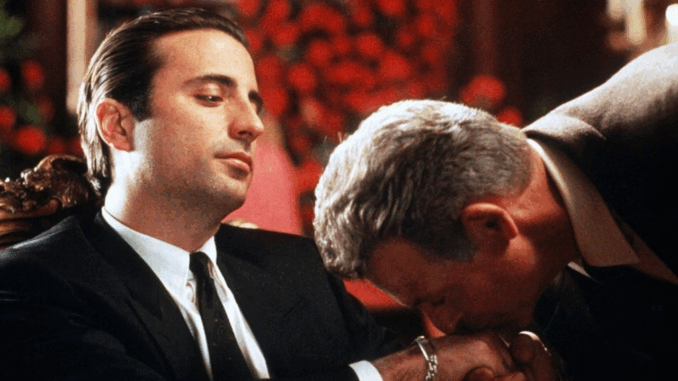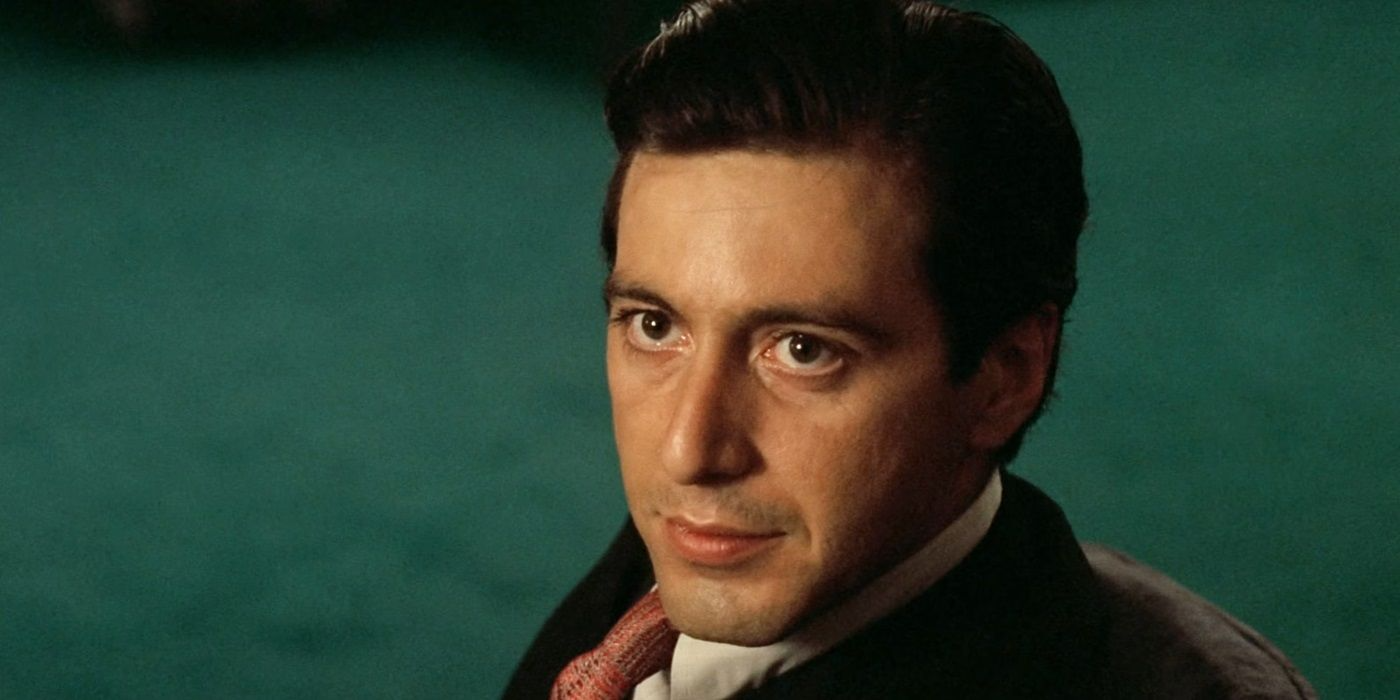
A Farewell Bathed in Regret and Tragedy
The Godfather Part III, released in 1990, arrived nearly two decades after the second film. Directed once again by Francis Ford Coppola, this final installment seeks to bring closure to the Corleone saga. While it remains the most polarizing of the trilogy, it is also the most tragic—less about crime and power, and more about guilt, redemption, and the haunting consequences of a life built on blood.
This is not the story of a rising king or a ruthless ruler. It is the story of a tired man trying, perhaps too late, to buy back his soul.
A Don’s Last Gamble for Salvation
Set in 1979, Part III follows an aging Michael Corleone (Al Pacino) as he seeks to legitimize his family’s empire. Now a philanthropic billionaire, Michael is determined to sever all ties to organized crime. He invests in a major real estate deal involving the Vatican—a move meant to clean his name and secure a future for his children.
But the past has sharp claws. Just when Michael thinks he’s out, new enemies pull him back in. Betrayals, political corruption, and internal family struggles return with a vengeance, proving that no amount of money or repentance can truly erase a legacy soaked in violence.
Michael Corleone: A Man Haunted by His Own Ghost
Al Pacino’s Michael is almost unrecognizable from the cold, calculating Don we saw in Part II. Now, he is softer, more remorseful—his face marked by age, illness, and regret. He suffers from diabetes, but his real illness is emotional: a heart burdened by decades of betrayal, loss, and bloodshed.
He tries to reconcile with his ex-wife Kay (Diane Keaton), reconnect with his children, and pass the reins of leadership to a new generation. But every effort at peace is met with echoes of the past.
Pacino delivers a powerful performance full of nuance—less about power and more about pain. His confession to a priest, breaking down as he admits to murdering his brother Fredo, is one of the film’s most raw and vulnerable moments.

New Faces, Familiar Shadows
-
Andy García as Vincent Mancini: The illegitimate son of Sonny Corleone, Vincent brings raw energy to the screen. He’s impulsive, passionate, and deadly—everything Michael once was. As Vincent rises in power, he mirrors Michael’s own journey, creating a chilling sense of history repeating itself.
-
Sofia Coppola as Mary Corleone: Mary, Michael’s daughter, becomes a symbol of innocence and tragic consequence. Her relationship with Vincent and her involvement in the family’s business create a tension that ends in heartbreak.
-
Joe Mantegna as Joey Zasa: A flashy, modern gangster, Zasa represents the chaos of the new criminal world—one with no honor or tradition.
Redemption, Regret, and the Inescapable Past
While the first two films focused on power and legacy, Part III dives into spiritual crisis:
-
Redemption vs. Damnation: Can a man like Michael ever be forgiven? The film suggests he cannot—not by God, his family, or himself.
-
The Cycle of Violence: As Vincent takes over, it’s clear the family is trapped in an endless loop. Power always demands blood.
-
The Cost of Silence: Michael’s quiet suffering is deafening. His refusal to speak the truth in earlier years has destroyed the ones he loves most.
Vatican Intrigue: A Risky but Fascinating Angle
One of the boldest elements of Part III is its incorporation of real-life Vatican scandals—corruption, banking fraud, and mysterious deaths. The film blends fiction with history, adding layers of political intrigue and religious symbolism. While this aspect confused some viewers, it also gave the story a global, apocalyptic weight—suggesting that no institution, no matter how holy, is free from rot.
Tragedy in Opera
-
The Opera Assassination: In a masterfully choreographed climax, a series of murders unfold during a performance of Cavalleria Rusticana, mirroring the drama on stage. It’s a return to the operatic style of the earlier films—beautiful, brutal, and unforgettable.
-
“Just when I thought I was out…”: One of the trilogy’s most quoted lines, Michael’s lament encapsulates the entire theme of Part III—the impossibility of escape.
-
The Final Scene: An old Michael sits alone in a Sicilian courtyard, silent, forgotten, and broken. He topples from his chair, and the camera holds on him as life slips away. No words. No music. Just silence. It is one of the most haunting endings in film history.
Flawed but Powerful
Part III was met with mixed reviews. Critics praised its ambition and performances, but pointed out weaknesses in casting and pacing. Sofia Coppola’s role as Mary was widely criticized, though her character’s tragic ending remains impactful.
Over time, the film has gained more appreciation for its thematic depth and emotional gravity. In 2020, Coppola released a re-edited version titled The Godfather Coda: The Death of Michael Corleone, which tightens the narrative and brings his original vision closer to life.
The Final Toll of a Lifetime of Power
The Godfather Part III may not reach the artistic heights of its predecessors, but it offers something uniquely powerful: closure. It’s a story of a man who had everything and lost it all—not to enemies, but to the very decisions he made to protect his family.
This final chapter is a slow, painful reckoning. It shows us that power has a price—and that even the most feared men in the world cannot outrun the judgment of time, faith, or their own conscience.
Michael Corleone’s final breath is not just the end of a man—it is the end of an empire built on loyalty, ambition, and unforgivable sins.
